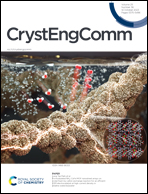Upconversion luminescence and temperature sensing properties of Yb2(MoO4)3:Ln3+ (Ln = Ho, Tm, Er) phosphors based on energy transfer†
Abstract
Yb2(MoO4)3:Ln3+ (Ln = Ho, Tm, Er) phosphors were synthesized by a hydrothermal method with further calcination. The crystal structure and morphology of the samples were characterized by X-ray diffraction and scanning electron microscopy. The effects of rare earth ion interaction in the Yb2(MoO4)3:Ln3+ phosphors on the upconversion (UC) luminescence properties and energy transfer process at different doping concentrations were discussed. It is concluded that by doping Ho3+, Tm3+, and Er3+ in the Yb2(MoO4)3 host, the phosphors emit orange-yellow, blue and green light, respectively, and the energy transfer from Yb3+ → Ho3+/Er3+ and Yb3+ → Tm3+ is a two and three photon process, respectively. Under the excitation of a 980 nm laser, by changing the Ho3+/Tm3+ ratio in doped Yb2(MoO4)3, we have realized the transition of phosphors from cold white light to warm white light. The temperature sensitivity of the 2H11/2 and 4S3/2 energy levels of Yb2(MoO4)3:Er3+ in the range of 323–573 K was studied by the FIR technology. The experimental results show that the maximum absolute sensitivity was 0.0081 K−1 at 573 K and the maximum relative sensitivity was 0.01 K−1 at 323 K. Compared with other materials, the Er3+ doped Yb2(MoO4)3 phosphor is an excellent optical temperature sensing material.



 Please wait while we load your content...
Please wait while we load your content...